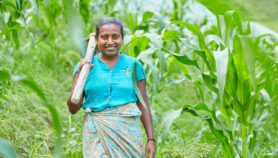By: Anita Makri
Send to a friend
The details you provide on this page will not be used to send unsolicited email, and will not be sold to a 3rd party. See privacy policy.
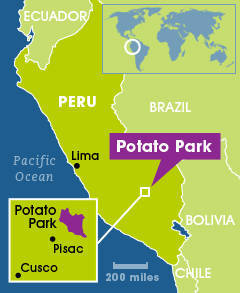
From 1 to 12 December, Peru will host the 20th Conference of Parties (COP 20) to the UN Framework Convention on Climate Change — the latest in a series of meetings by the UN’s decision-making body on climate action.
The event is promoting the participation of indigenous peoples, who are set to voice their views and discuss solutions at the meeting. And Peru’s environment minister, who has spoken about the role of science, technology and traditional knowledge in tackling climate change.
Through images and interviews, this feature probes how science and traditional knowledge are combined at the Potato Park — an area in the Cusco region of Peru where indigenous Quechua communities live and work to systematically preserve hundreds of varieties of the native potato as well as other Andean root vegetables and tubers.
(Photography by Anita Makri and Bibiana Melzi)
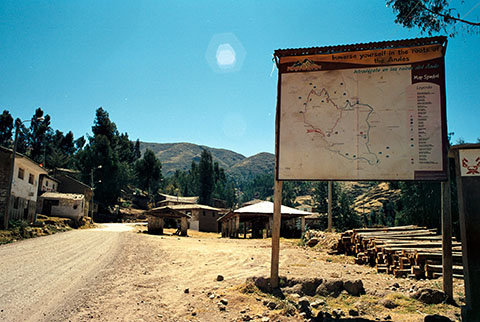


“Immerse yourself in the roots of the Andes,” reads a message on a tall sign beside the road as we drive through the Sacred Valley of the Incas. We are in the Peruvian Andes, about 3,100 metres above sea level, and about to enter the Potato Park.
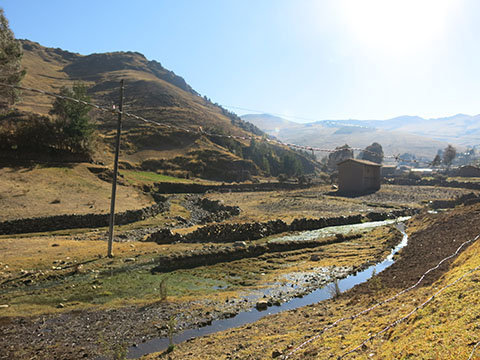


The Potato Park is a conservation initiative dedicated to preserving native crop varieties, and is one of the few in the world where local people manage and protect biological resources with traditional knowledge. It collaborates with the International Potato Center (CIP), a research institution, and is managed by non-profit NGO ANDES.
The more than 6,000 people who live here in six communities share land, culture and a tradition built around the cherished native potato.
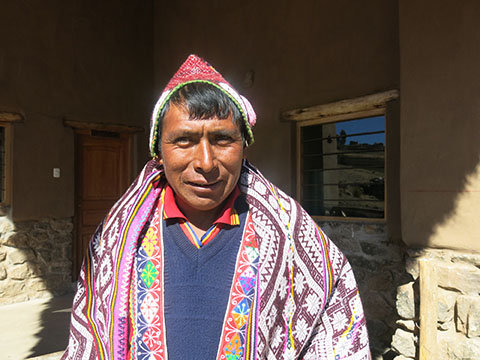


More than an hour into my visit, I talk to Lino Mamani, pictured above, who manages the storeroom that also acts as a ‘potato bank,’ housing more than 1,000 varieties of potato grown in the park. Through words translated by Peruvian journalist and producer Bibiana Melzi, he tells me how climate change is affecting farmers’ lives.
“First of all, there’s too much sun. And rain comes too early. So we’re receiving rain before we’re ready, and we’re also seeing the frost come earlier,” he says. “So the problem is that we’re having to plant potatoes higher and higher and higher.”
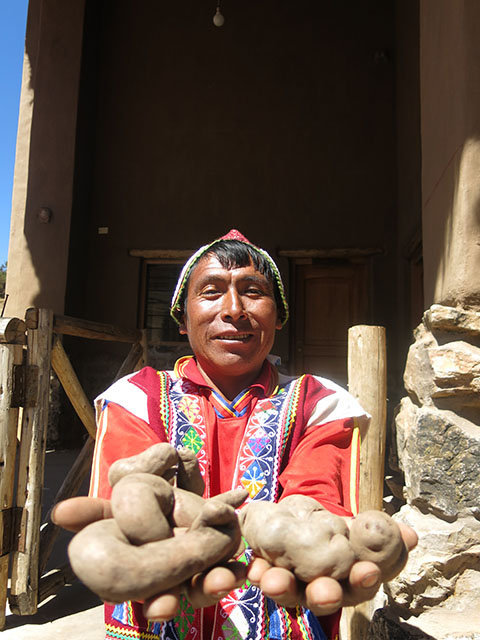


This is one of the reasons why the community values the vast diversity of potato varieties kept here. Mamani explains they are experimenting with the planting — growing potatoes at higher or lower elevations — to adapt to the changes. Festivities with earth offerings and dances often accompany that rotation — a sign of the deep connection between the potato and local culture.
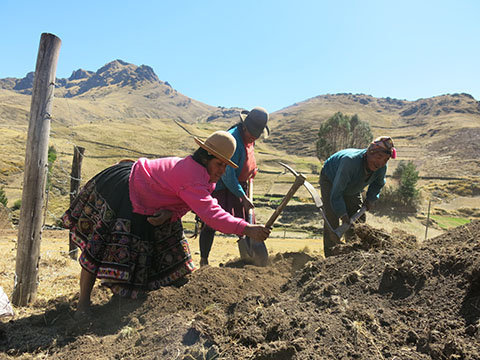


Local people live and work the land by ayllu, a traditional system of reciprocity. This means that if people living at higher elevations cannot grow a particular kind of potato as a result of climate change, they can rely on the rest of their community to share their produce.
They are also adapting to climate change by cross-pollinating existing varieties in search of more-resistant ones. And, as I find out, this is one way that science complements traditional knowledge.
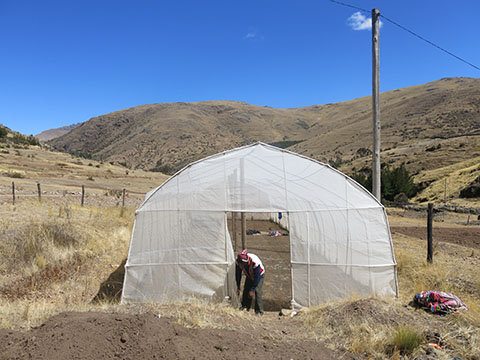


I spoke with Lino Loayza, field coordinator at ANDES, about what science brings to the park’s work and how it sits alongside traditional knowledge.
Loayza runs through the basics of improving potato varieties. He explains that the potato plant produces two kinds of seeds: the flower seeds and the tuber seeds. Because the tuber seed is susceptible to viruses, it’s the seed obtained from the flower that is planted in the greenhouse. The baby tubers that grow from these seeds are then planted in the fields. It takes at least four years of fieldwork to produce usable potatoes.
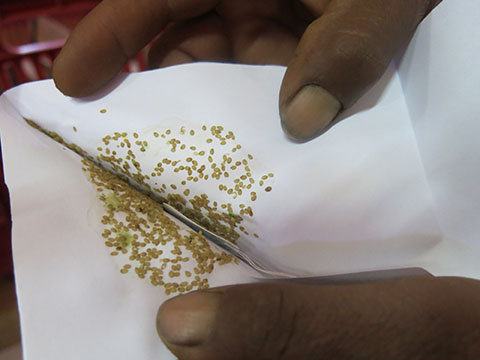


The CIP is now teaching this method of obtaining a better seed to the farmers — transferring that scientific knowledge so the indigenous communities can continue to grow and harvest native potatoes.
“There’s another type of investigation, molecular, which is much more scientific” Loayza tells me. “But this method is much easier, much faster. It uses people’s own knowledge. These people haven’t gone to school, they haven’t received that kind of education, but they have knowledge of hundreds of years of working with potatoes. But they needed this extra [scientific] information. The two needed to be paired: the traditional knowledge and the scientific knowledge.”
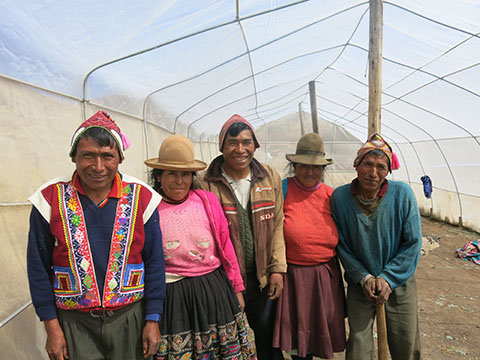


ANDES began working at the park in the mid-1990s with the goal of protecting the environment. But the NGO soon realised that the communities were guardians of a rich variety of potatoes, and started working to preserve them. And so in 2002, they started working with potatoes — “first, leaning from the local people,” Loayza says, “and then teaching them the science.”
I ask Loayza what the world can learn from the work done at the Potato Park. He first points out that many NGOs have worked in this area, usually imposing their science on the communities that have been living here for generations. But “for ANDES, having respect for the people here, that is the law,” he says.
Members of the community working at the park say the same — that, in the past, NGOs would show up, do the work and go without leaving any information behind.
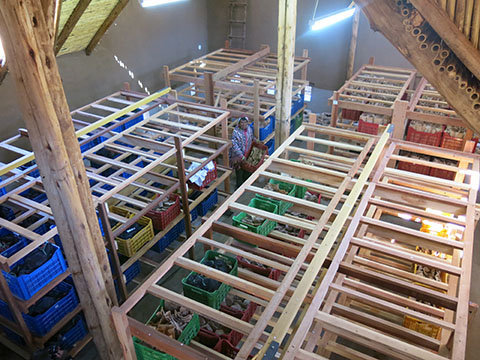


I ask Loayza how else science is being applied at the park. This project began with research, he explains. ANDES started to systematically collect the different varieties of potato from the area and register them.
The NGO also signed an agreement with CIP, which had collected samples of potatoes in the area 50 years back. As a result, 410 potato varieties were reintroduced to the area. “They brought from their genetic bank the little seedlings in test tubes, and it’s 100 per cent guaranteed that they are the same species they took from here 50 years ago,” says Loayza. “The CIP brings in its science to characterise and identify, through molecular research, the potatoes in this area. So [the community] can state that they have 1,347 varieties here.”
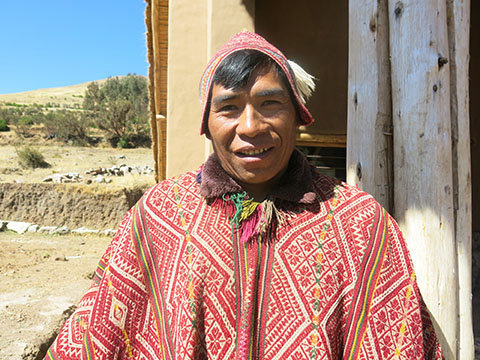


The local people are also learning how to pollinate flowers to create new varieties without having to plant the tubers. And they are benefiting from the science of identifying varieties.
Mariano Sutta, pictured above, says: “As potato people, we know the whole process about the agriculture we learned from our parents. But we need to learn how to read potatoes.”
According to Loayza, local people can identify the different varieties of potatoes from their colour, shape, taste and how sandy the texture is. “But now they also know how to recognise them through the leaves, the stem, the flower,” he says. “They can now read tables with information on characteristics such as the colour of the flower, the colour and the shape of the stem.”
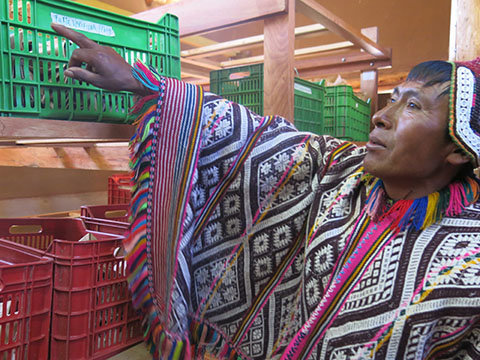


Sutta tells me there are tangible benefits to this knowledge: it makes the work simpler and more productive. “Every potato [type] can get different diseases, so, if we’re sure which potato is which, then we know how to disinfect effectively. And, of course, that makes our life easier.”
Science and indigenous knowledge also coexist when it comes to disinfection. The traditional method of eliminating viruses is by rotating the terraces where each potato variety is planted. CIP scientists use their own methods, such as applying heat to kill viruses and growing plantlets in vitro, before returning ‘clean’ varieties back to the farmers.
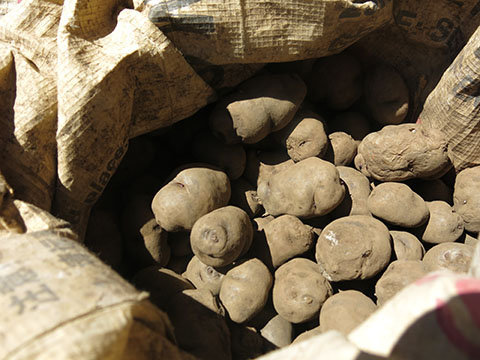


This scientific knowledge is helping the community adapt to climate change by making the most of the potato varieties on their land. “Now we can obtain seeds to plant or to keep for ten, 20 years,” says Mamani.
He highlights two varieties of potatoes grown throughout the park at different altitudes. A variety of bitter potato called Moraya is grown from 4,200 to 4,800 metres as it can withstand severe weather. This potato turns white as a result of processing, which involves dehydrating and freeze-drying before it gets stored. Chuño is another potato that is freeze-dried and processed in a similar way to Moraya, but its flesh remains black.
“Chuño and Moraya, for us, mean food security. You can store Chuño anywhere you want, for one year, five years”, says Mamani. “We have reasons behind preserving all these varieties.”












